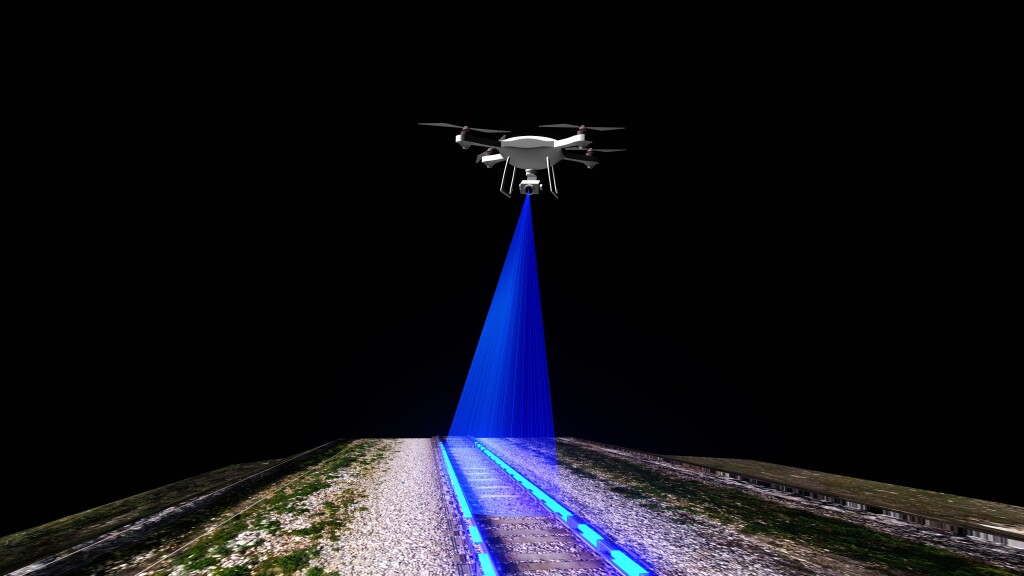The reality capture industry is booming. A somewhat nebulous concept, reality capture generally refers to technologies like lidar and photogrammetry, which are used to create accurate digital representations of the physical world, and it is being used across numerous industries. Recently, in a webinar hosted by Geo Week News, Autodesk’s John Sayre talked about how important the technology is becoming for the infrastructure sector.
More broadly, one report estimates that the reality capture software market – a good stand-in for the industry as a whole, even if it doesn’t include the sale of crucial hardware – is expected to reach $3.5 billion by 2033. It’s no longer fair to say that reality capture is a new tool, but we are certainly reaching a major point in the development, evolution, and adoption of the technology, for a number of reasons.
On the positive side, the last few years have undeniably taken the laser scanning portion of reality capture to a new level thanks to innovations on both the hardware and software part of the equation. For hardware, advancements in lidar technology have unlocked new potential in the way scanning systems can be designed. Thanks in large part to the automotive industry, whose use of lidar in autonomous vehicles has led to massive investment into research and subsequent improvements to the technology, these scanners have been able to shrink in size without sacrificing power.
For reality capture, that means more powerful sensors that can be used with drones that won’t take away flight time, smaller terrestrial-based systems that can be held or used with a backpack or ground robot, and powerful mobile mapping systems that can capture accurate data at high speeds via cars or trains. With all of these, new applications are being created and existing use cases are being enhanced, and these innovations are coming at a rapid pace.
Arguably, the advancements that have come on the software side of reality capture are even more prominent. For instance, artificial intelligence has made analysis of reality capture data more efficient than ever. Take, for instance, the example of inspecting powerlines using reality capture data from drones. A professional may need to inspect miles of powerlines, and going through that data manually, while certainly not impossible, is time-consuming. With ever-improving AI, machine learning algorithms can be trained to identify potential defects and anomalies, allowing the worker to prioritize those areas and significantly speed up the workflow.
We’ve also seen continuous advancements in SLAM algorithms, which tie back to the mobile mapping systems mentioned above, particularly for those handheld systems. Some of the best use cases for these systems are areas with shoddy or non-existent GNSS signals, so having strong SLAM capabilities makes that reality capture workflow all the more powerful for these areas.
For laser scanning in particular, though, there are some potential headwinds coming in the near term, particularly for those in the United States. The recent tariffs that have been placed on countries all around the world are affecting nearly every industry in the nation, and complex technologies that require chips and other parts from around the world could be among the most affected. While some of the major manufacturers do have some facilities in the U.S., most scanners are manufactured in Europe and Asia, which could potentially up the already-high costs for some of these scanners moving forward. The ROI that comes from these workflows should still be able to cover any potential cost increases – and for what it’s worth, I haven’t heard of this being a direct concern just yet – but it could change how aggressive small and mid-size firms in particular are in purchasing new hardware in the near-term.
The good news on that front is that photogrammetry and image-based reality capture is coming back in a big way. Just like lidar, high-resolution cameras are constantly improving, but the real improvements for photogrammetry are coming in the form of radiance fields. Whether it’s NeRFs or, more commonly of late, Gaussian Splats, these new techniques for rendering 3D scenes based on still images are revolutionizing this space. They require fewer images than traditional photogrammetry and, in the case of splats in particular, require far less local memory, making them easier to stream. They aren’t as ideal for some workflows as scan-based reality capture – measuring is now possible with Splats, but it’s certainly not as accurate as high-quality scan data – but for many workflows these are starting to become much more common.
Like any other emerging technology, reality capture is still growing, and even given some of the price concerns that can come from outside influences, the other advancements are still buoying tremendous growth. One of the biggest signals of this is that there are just so many distinct sectors taking advantage of the technology. There is, of course, the AEC industry that forms the strong base of the technology’s usage, but entertainment is using the tools to help create virtual worlds. Law enforcement agencies are using it to streamline and enhance investigations. Environmentalists are using it to better understand the world around us. Archaeologists are getting more information than ever before about artifacts found around the world.
All of this is to say, reality capture, while no longer new, is still very much in a growth stage, with no signs of slowing down.





.jpg.small.400x400.jpg)
